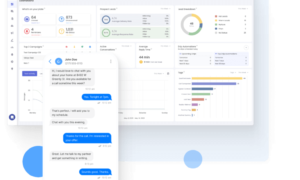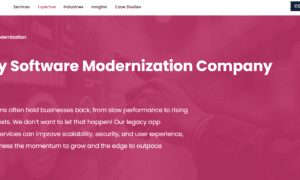Efficiency is key in sales. Companies are constantly seeking ways to streamline their processes, reduce the length of their sales cycles, and increase their conversion rates. One crucial area that can significantly impact these metrics is lead management. Effective lead management helps identify high-potential leads and ensures that sales teams focus their efforts where they are most likely to yield results. This article explores how businesses can maximize their B2B sales efficiency through better lead management.
Understanding the Importance of Lead Management
Lead management is the process of capturing, tracking, and nurturing leads until they are ready to make a purchase. It involves several stages, including lead generation, scoring, nurturing, and conversion. Effective lead management ensures that no potential customer falls through the cracks and that all leads are given the attention they need to progress through the sales funnel.
Good lead management has many benefits. It helps improve the quality of leads, reduce the sales cycle length, increase conversion rates, and ultimately boost revenue. Moreover, it enables sales teams to work more efficiently by prioritizing leads that are most likely to convert, thereby saving time and resources.
Implementing Lead Scoring
One of the most effective ways to manage leads is through lead scoring. Lead scoring is the process of assigning a value to each lead based on their behavior and demographics. This value helps sales teams determine which leads are most likely to convert and should be prioritized.
To implement lead scoring, businesses need to identify the key attributes and behaviors that indicate a lead’s readiness to buy. These can include factors such as the lead’s job title, company size, industry, engagement with marketing materials, website visits, and interactions with sales representatives. Each factor is assigned a specific score, and the total score helps in ranking the leads.
For example, a lead who has visited the pricing page of your website multiple times, downloaded a whitepaper, and attended a webinar is likely to have a higher score than a lead who has only visited the homepage. By focusing on high-scoring leads, sales teams can increase their chances of closing deals more efficiently.
Nurturing Leads Effectively
Lead nurturing is the process of building relationships with leads through personalized and relevant communication. It involves providing leads with valuable content and information that addresses their needs and pain points, helping them move through the sales funnel.
Effective lead nurturing requires a deep understanding of your leads’ interests and behaviors. Marketing automation tools that track and analyze lead interactions can achieve this. Based on this data, businesses can segment their leads and create targeted nurturing campaigns.
Email marketing is a powerful tool for lead nurturing. Personalized email campaigns that deliver relevant content can keep leads engaged and informed. For instance, if a lead has shown interest in a particular product feature, sending them case studies, testimonials, and how-to guides related to that feature can help nurture their interest and move them closer to a purchase decision.
Aligning Marketing and Sales Teams
One of the biggest challenges in lead management is ensuring alignment between marketing and sales teams. Misalignment can lead to lost leads, wasted efforts, and missed opportunities. Fostering collaboration between these two teams is crucial to maximizing B2B sales efficiency.
Marketing and sales teams should work together to define the ideal customer profile, establish lead scoring criteria, and develop lead nurturing strategies. Regular communication and feedback loops can help ensure that both teams are on the same page and working towards common goals.
Sales teams should provide marketing with feedback on the quality of leads and the effectiveness of lead nurturing campaigns. This feedback can help marketing refine its strategies and generate higher-quality leads. On the other hand, marketing should share insights on lead behavior and engagement with sales, enabling them to tailor their approach and close deals more effectively.
Utilizing CRM Systems
Customer Relationship Management (CRM) systems are essential tools for effective lead management. A CRM system helps businesses capture, track, and manage leads in a centralized database. It provides a comprehensive view of each lead’s interactions and history, enabling sales teams to make informed decisions.
With a CRM system, businesses can automate lead scoring, track lead behavior, and set up personalized nurturing campaigns. CRM systems also facilitate collaboration between marketing and sales teams by providing a shared platform for lead management.
For instance, if a lead has interacted with your company through multiple touchpoints, a CRM system can consolidate this information and provide a holistic view of the lead’s journey. This enables sales teams to tailor their approach and engage with the lead in a more personalized and relevant manner.
Lead Qualifications
One of the critical steps in lead management is conducting thorough lead qualification. Lead qualification is the process of evaluating whether a lead meets the criteria for becoming a customer. This step is crucial for ensuring that sales teams focus on leads most likely to convert.
Thorough lead qualification involves assessing both the fit and the interest of the lead. Fit refers to how well the lead matches your ideal customer profile, while interest refers to their level of engagement and intent to purchase. Combining these two aspects allows businesses to identify high-potential leads and allocate resources accordingly.
For example, a lead from a company that fits your target industry and has shown significant interest in your product through multiple interactions will likely be a high-priority lead. On the other hand, a lead that does not match your ideal customer profile and has shown minimal engagement may require further nurturing before they are ready for sales outreach.
Optimizing Your Funnel
The sales funnel represents the stages a lead goes through, from initial contact to final conversion. Optimizing the sales funnel involves identifying and addressing bottlenecks and inefficiencies at each stage. This can help in reducing the sales cycle length and increase conversion rates.
To optimize the sales funnel, businesses need to analyze the performance of each stage and identify areas for improvement. This can include improving lead capture methods, refining lead scoring criteria, enhancing lead nurturing campaigns, and streamlining the sales process.
For instance, if a significant number of leads are dropping off at the consideration stage, it may indicate that your lead nurturing efforts need to be strengthened. Providing more targeted and relevant content at this stage can help keep leads engaged and move them toward a purchase decision.
Bringing it All Together for Sales Success
Maximizing B2B sales efficiency requires a comprehensive approach to lead management. Businesses can significantly improve their sales processes by implementing lead scoring, nurturing leads effectively, aligning marketing and sales teams, utilizing CRM systems, conducting thorough lead qualification, and optimizing the sales funnel. These strategies help identify high-potential leads and ensure that sales teams focus their efforts where they are most likely to yield results. In today’s competitive B2B landscape, effective lead management is the key to driving sales efficiency and achieving business success.



































